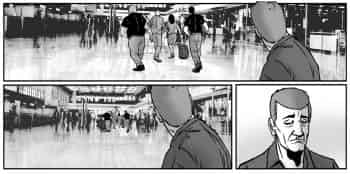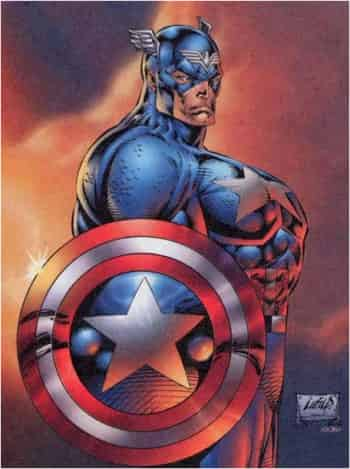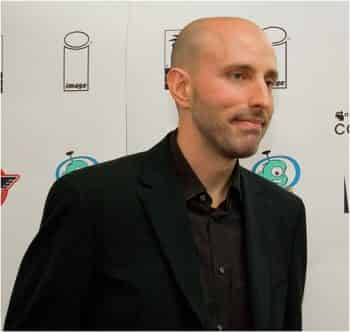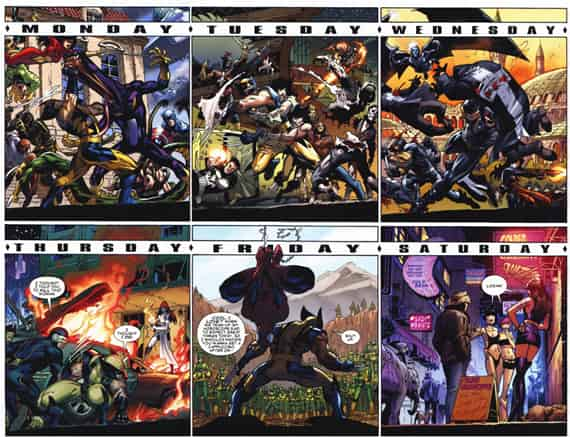
Axioms
Death isn’t the only way for characters to leave the story
Death is inevitable in a story world like the one inhabited by the Apatrides. It would be unnatural if it weren’t. However, deaths shouldn’t become commonplace. In our opinion, Eva’s departure from the story is an elegant exit, one that opens up a new chapter of her life. Her departure does not mean she ceases to exist.
Too much muscle, not enough psychology
We’ve already spoken a few times about the super-proportioned physiognomy used to draw female characters. But Andrew Wheeler (“Why Big Superhero Muscles Aren’t the Same Thing as Sexy Curves,” comicsalliance.com, September 25, 2014) turns the tables and wonders if a similar phenomenon isn’t also affecting male superheroes. He asks female readers for their opinion. One replies: “Heroes tend to be drawn with tons of bulky muscles and weird proportions that I find unappealing.” It’s hard to disagree when we look at the illustration of Captain America.
We’ve stated it before in our Axioms, but we want our characters to have athletic physiques, like a cyclist or a soccer player, rather than a bodybuilder who spend 20 hours a day at the gym.
The Use of Electronic Media
In this era of social media, it’s very easy to share one’s opinions. But we gave ourselves two lines of conduct to follow. Here are two quotes that perfectly encapsulate how we feel about this issue Brian K. Vuaghan, writer of the SAGA series and screenwriter for the TV series Lost , had this to say about Twitter, during an interview: “I think that writing is a thing I can only do when I have to do it and it’s going toward a piece of fiction. I don’t have it in me to write just for the hell of it” (“Interview: Brian K. Vaughan on SAGA, Lost, Twitter and more,” The Beat, March 14, 2012, comicsbeat.com). And Anthony Falcone stated a simple truth, but one that’s still worth quoting: “It’s always very easy to write about why you don’t like something. […] It is harder to talk about some of the things we like without sounding like mindless automaton fanboys” (Anthony Falcone, “Why I like Comic Books,” www.comicbookdaily.com, January 31, 2012).
We thought carefully about how we would use our Facebook page, in an effort to avoid cannibalizing the additional content we offer on our Website. We decided to clearly define the angle we would take on Facebook, limiting the topics we would be discussing there in order to avoid talking about a great many topics but in a very superficial way.
For these reasons, we are not using Twitter, which would require a too-high production rate for us. We want avoid creating poorly thought-out content.
Archiving and timeline – Part IV
While some characters are confined to specific story lines, others recur in, like Markham, Blascovitch, Brookbank and Wood.
Archiving and timeline – Part III
The Exile story line focuses on Benson and Eva. The Damned revolves mainly around the experiences of various recruits prior to their arrival at one of the two training camps. And Vultures explores the characters of Valasquez, Cordo, Blascovitch and Markham.
The upshot of having set these constraints for the story lines is that some characters only appear in some story lines. Therefore Fabien, Rebel and all Consortium characters are only in The Cycle of Shadows. Benson and Eva are only in Exile and The Cycle of Shadows, while Valasquez and Cordo are only present in The Cycle of Shadows and Vultures.
Archiving and timeline – Part II
The Cycle of Shadows is the only story line that is published chronologically and that brings together all of our characters. The other story lines (Exile, The Damned, Vultures) focus on a specific group of characters whose stories can take place in different eras. The constraints of these story lines will be explained in another post.
So, you read minds then?
On the Web, there are a lot of critics bemoaning the fact that recent comic books are much faster reads than they were in the 60s and 70s. Should this bother us? We certainly don’t think so. Those older comics were often overwritten, with bubbles narrating what was already clear in the illustrations. And thought bubbles became an easy way to explain what was going on—often at the expense of suspense. In the movies, we only get access to characters’ thoughts y illustrated. In movies (that don’t resort to the use of voiceover), characters’ thoughts are mainly conveyed to the audience by way of powerful images. This can create much stronger scenes because they give viewers some freedom of interpretation. So, for our comic, we gave ourselves the goal of not saying what the illustrations already show. And that’s why you won’t see us resorting to thought bubbles.
Spacing out field operations in time
We saw this graphic showing how Wolverine is in so many Marvel series that he seems to be in action every day. We wanted to avoid this type of situation for two reasons. First because our characters aren’t only combatants in action scenes—we want to give them a more rounded existence. And second, there are logical and practical concerns. As we’ve said before, missions are the result of information gathering, so we have to give our characters enough time to gather it.
Story density
Many people bemoan the fact that stories published by Marvel are increasingly fast reads. Authors are now trying to write only what’s essential, and we agree with this approach to scripting scenes. However, one of our collaborators pointed out recently that there are also fewer panels per page, which reduces how much the reader is getting out of reading. Webcomics get around this problem because it offers comic strips for free, which eliminates the issues readers may have with the cost and time involved in reading a strip.
Built like Athletes, Not Bodybuilders
We don’t give our characters (good and bad) oversize builds. For example, the Black Orchestra’s suppression team is in great physical shape, without necessarily looking like bodybuilders. Even Fabien, who’s been trained for hand-to-hand combat, doesn’t look like he spends 20 hours a week at the gym. This approach to the physical appearance of our characters is in line with our desire to set our story in a universe that’s relatively believable.





